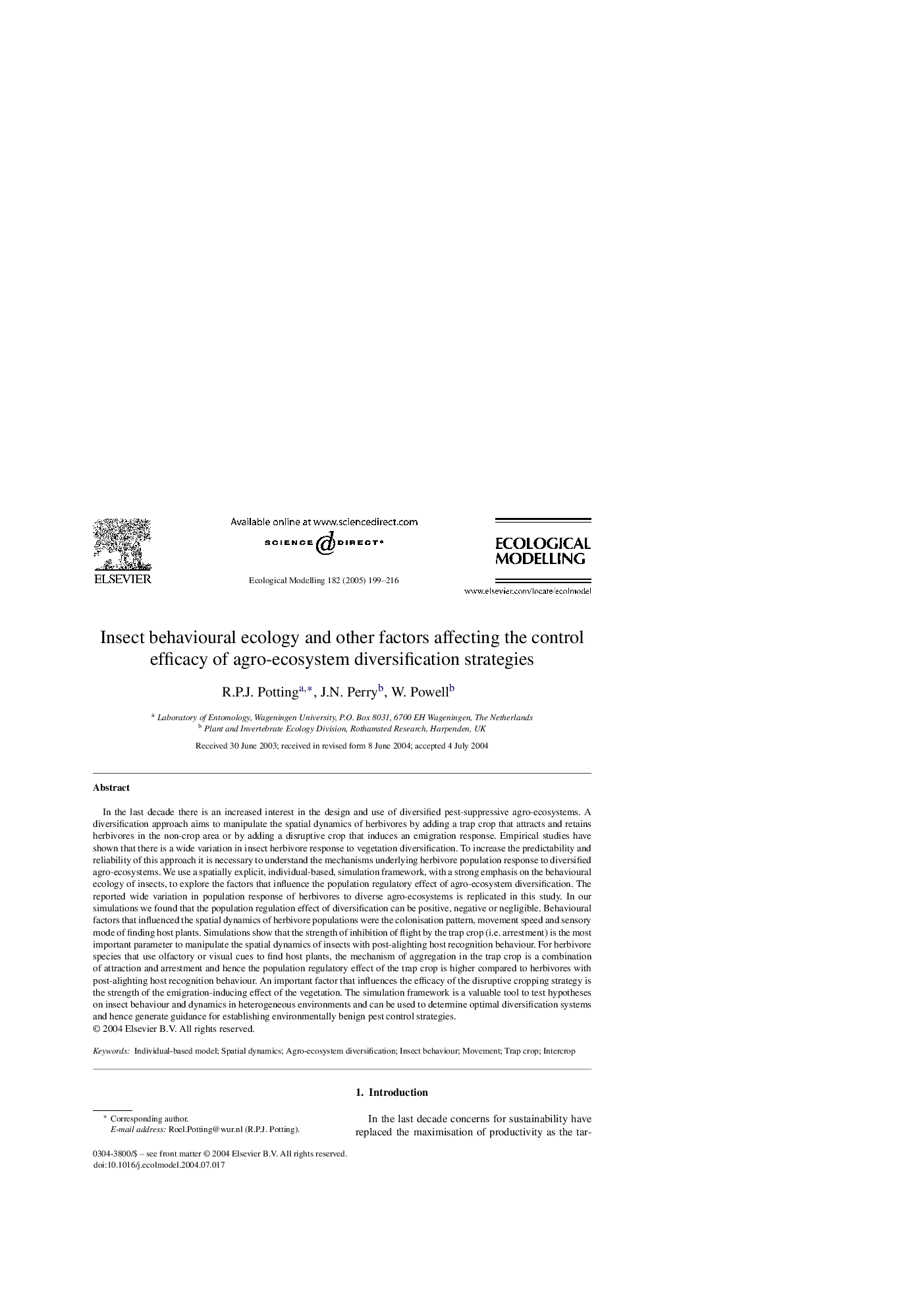| کد مقاله | کد نشریه | سال انتشار | مقاله انگلیسی | نسخه تمام متن |
|---|---|---|---|---|
| 9443611 | 1303541 | 2005 | 18 صفحه PDF | دانلود رایگان |
عنوان انگلیسی مقاله ISI
Insect behavioural ecology and other factors affecting the control efficacy of agro-ecosystem diversification strategies
دانلود مقاله + سفارش ترجمه
دانلود مقاله ISI انگلیسی
رایگان برای ایرانیان
کلمات کلیدی
موضوعات مرتبط
علوم زیستی و بیوفناوری
علوم کشاورزی و بیولوژیک
بوم شناسی، تکامل، رفتار و سامانه شناسی
پیش نمایش صفحه اول مقاله

چکیده انگلیسی
In the last decade there is an increased interest in the design and use of diversified pest-suppressive agro-ecosystems. A diversification approach aims to manipulate the spatial dynamics of herbivores by adding a trap crop that attracts and retains herbivores in the non-crop area or by adding a disruptive crop that induces an emigration response. Empirical studies have shown that there is a wide variation in insect herbivore response to vegetation diversification. To increase the predictability and reliability of this approach it is necessary to understand the mechanisms underlying herbivore population response to diversified agro-ecosystems. We use a spatially explicit, individual-based, simulation framework, with a strong emphasis on the behavioural ecology of insects, to explore the factors that influence the population regulatory effect of agro-ecosystem diversification. The reported wide variation in population response of herbivores to diverse agro-ecosystems is replicated in this study. In our simulations we found that the population regulation effect of diversification can be positive, negative or negligible. Behavioural factors that influenced the spatial dynamics of herbivore populations were the colonisation pattern, movement speed and sensory mode of finding host plants. Simulations show that the strength of inhibition of flight by the trap crop (i.e. arrestment) is the most important parameter to manipulate the spatial dynamics of insects with post-alighting host recognition behaviour. For herbivore species that use olfactory or visual cues to find host plants, the mechanism of aggregation in the trap crop is a combination of attraction and arrestment and hence the population regulatory effect of the trap crop is higher compared to herbivores with post-alighting host recognition behaviour. An important factor that influences the efficacy of the disruptive cropping strategy is the strength of the emigration-inducing effect of the vegetation. The simulation framework is a valuable tool to test hypotheses on insect behaviour and dynamics in heterogeneous environments and can be used to determine optimal diversification systems and hence generate guidance for establishing environmentally benign pest control strategies.
ناشر
Database: Elsevier - ScienceDirect (ساینس دایرکت)
Journal: Ecological Modelling - Volume 182, Issue 2, 10 March 2005, Pages 199-216
Journal: Ecological Modelling - Volume 182, Issue 2, 10 March 2005, Pages 199-216
نویسندگان
R.P.J. Potting, J.N. Perry, W. Powell,